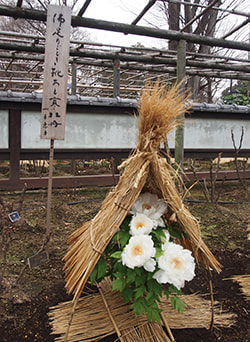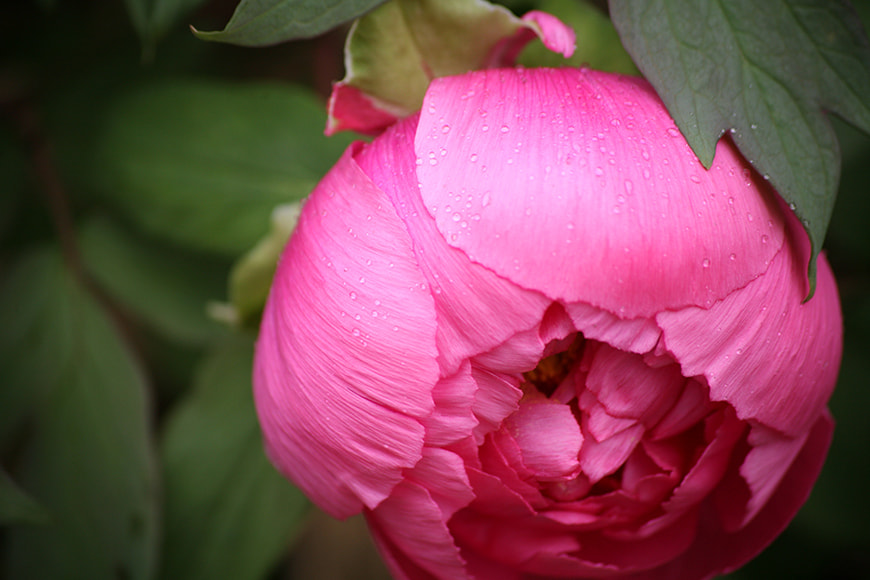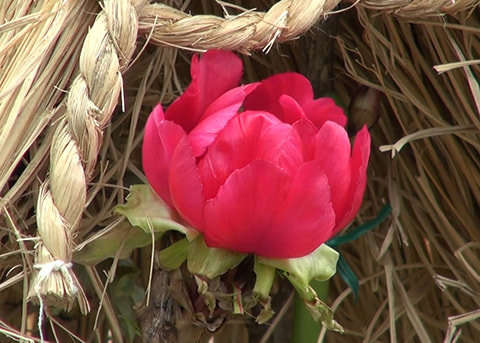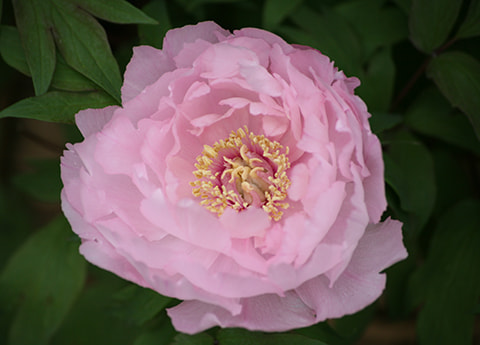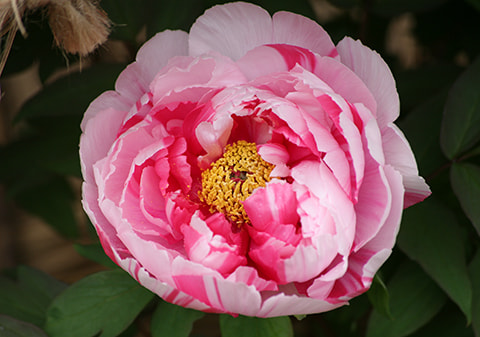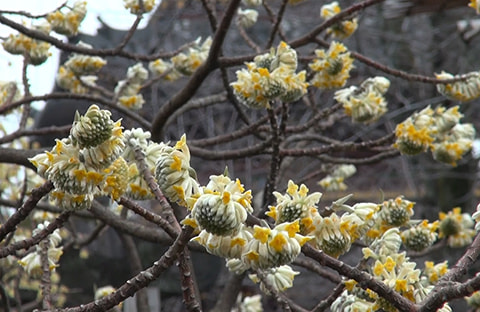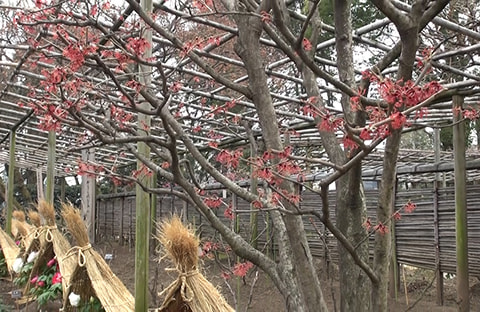
Manami Toyomasu, a staff member of the Peony Garden, Ueno Toshogu
We talked with Manami Toyomasu, a staff member of the Peony Garden, Ueno Toshogu (Interview: February 2019)
About the best time to see the Peony Garden
Q: When do many viewers come to the garden?
Basically, the number of viewers is high on Saturdays and Sundays. Many viewers also come to the garden on the first three days of the new year and during the season of the Chinese New Year (the lunar New Year Day).
Q: I see a lot of haiku poems written on boards throughout the garden. Were many of those poems composed in the garden?
This year marked the 37th anniversary of the exhibition of winter peonies, so haiku poems composed by haiku poets who submitted poems in the haiku meeting that has been held since the foundation of the garden and by people whose poems were selected are displayed.
Q: Are varieties of spring peonies larger in number than winter peonies? When do you open the Peony Garden?
Well, there are 40 varieties of winter peonies while about 110 varieties of spring peonies. The best season to see the peony is spring, so there are many varieties of spring peonies. The Peony Garden opens for about two months from January to February in winter, and for about one month from mid-April to mid-May in spring.
Q: When is the best season?
Although the certain number of peonies constantly bloom during the period in which the garden is open, the best time to see peonies is around April 20, and about half of them bloom at the same time.
Q: Do you grow winter peonies in greenhouses?
Yes. We grow peonies in greenhouses after transplanting them from ground.
The Origin of peonies
Q: Which peonies are rare varieties?
This Togawakan is Kanbotan, or winter peony, that blooms in winter. Although flower leaves of Togawakan are smaller than other peonies, it is the remontant peony that blooms in winter and spring. Its flowering rate is less than 20%, and this is the only peony that blooms this year, so it is a valuable variety.
Q: Which varieties are popular?
Yachiyo-tsubaki and Shima-nishiki are popular. Yellow varieties of peonies are also popular because their fragrance is very nice.
Q: Are there overseas varieties other than Chinese ones?
There are American and French varieties. Those varieties are a little bit different from traditional varieties, some of which were improved from Chinese peonies. This yellow variety has a Western-style name, "High Noon." (continued in the right column)
Q: What is the difference between Japanese and overseas varieties?
I do not know major differences, but Western varieties have narrower leaves than Eastern ones. Especially, it is a characteristic of French and American varieties. One of other characteristics of Western varieties is that they often have tinted leaves. Standard peonies have a little bit wide green leaves.
Q: What part of the Peony Garden do you specifically want to introduce?
A part of the Peony Garden is a Japanese-style garden where visitors can enjoy both the landscape and peonies. There are also other kinds of flowers, so viewers can enjoy seeing them.
For example, this is an Oriental paper-bush, that can be used to make Japanese paper and paper money. It has peculiar scent and is called "Mitsumata," literally meaning three-pronged, because its branches are three-pronged. Also, there are weeping ume trees, Japanese andromedas and white-blossomed ume trees over here. Cherry trees, including Somei-Yoshino and Kawazu cherry trees, bloom in spring. There are also Japanese witch hazels that have red flowers.
Support for overseas visitors
Q: I heard that the Peony Garden currently has an area of about 9,900 square meters. How has the area been changed since its opening?
The area has nearly reached to an equivalent size of the main building after it was extended.
Q: You mentioned that visitors increase in the season of the Chinese New Year (the lunar New Year Day). Do many overseas visitors come to this place?
Well, they have continued to increase year after year. About 20-30% visitors are from abroad. Most Japanese visitors only take photos of flowers, but I often see overseas people who take photos of both flowers and themselves.
Q: How do you support overseas visitors?
We have prepared four versions of a brochure, which are written in Japanese, English, and traditional and simplified Chinese.
Q: Is there any difference between how Japanese people appreciate flowers and how overseas visitors do so?
I think Chinese and Taiwanese have a lot of opportunities to see flowers in spring in their countries, but it is rare for them to appreciate many flowers in winter, so I hope they can enjoy seeing peonies in winter.
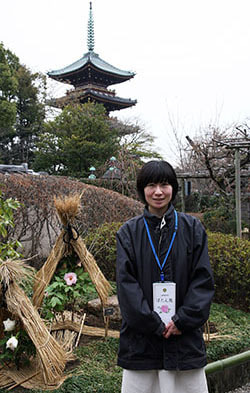
Manami Toyomasu, a staff member of the Peony Garden, Ueno Toshogu
